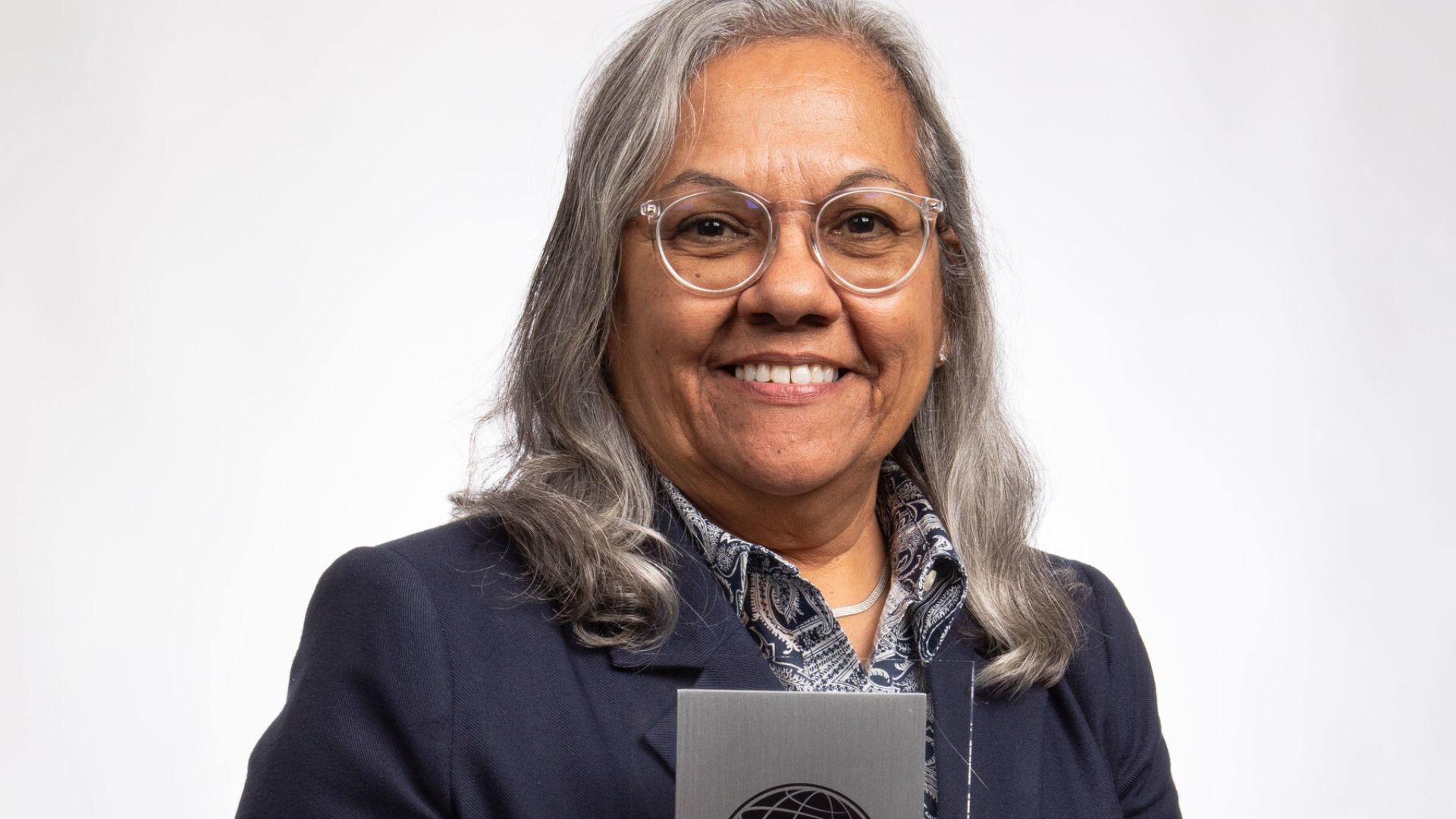EDINBURG, Texas – Members of the Hidalgo County Prosperity Task Force held an in-depth discussion on how to recruit companies that pay high wages.
The task force’s economic development subcommittee met at UT-Rio Grande Valley’s Community Engagement & Student Success center in Edinburg.
The task force was set up by Hidalgo County Judge Richard Cortez to address the high level of poverty in the Rio Grande Valley.
Mario Lozoya, president of Lozoya Consulting, set the scene by saying the levels of poverty have remained pretty consistent for a long time.
“I look at the MSA (Metropolitan Statistical Area) numbers. I’ve been looking at these for probably over ten years and they haven’t really changed. The three MSA here in South Texas (McAllen, Brownsville, and Laredo) are still the poorest in the U.S.,” Lozoya said.
Keith Patridge, president of McAllen Economic Development Corporation, said the region must decide what type of jobs it wants to attract and then figure out what economic development organizations have to do to support those jobs.
“In other words, how much power, buildings, support infrastructure do we need. Because if you don’t have that, but you have the skills, all you are doing is shipping those skills out, which is what we’re doing now,” Patridge said.
“Skills are important. But there are other things you need to look at if you want to bring an industry in. You better make sure you have the infrastructure to support it. One of the big issues we have right now is power. If we don’t have the power here, no matter how many graduates you have, I think we’re not going to get that critical infrastructure.”
Adam Gonzalez, CEO of the Council for South Texas Economic Council, said the Valley’s per capita income is 50 percent lower than the national average.
Adam
“I agree with Mario (Lozoya). I agree with Mr. Patridge. There are two separate strategies. There is a workforce development gap that we’ll need to fill. So, the schools need to get involved with this. The (nonprofit) foundations need to get involved with this. And, of course, the economic development organizations,” Gonzalez said. “But we also need new types of jobs. We need industry.”
Gonzalez said that in the seven counties COSTEP represents, the manufacturing sector is only two to three percent.
“We’re heavily weighted on the service industry and the hospitality industry, which, we know, offer a low-paying jobs. I feel when I say this, and I don’t want to offend anybody, we’re still promoting the same thing that has kept us in that 50-percentile level.”
Ron Garza, associate vice president for workforce and economic development at UTRGV, said there could be some “low-hanging fruit” to go after which would help reduce the level of poverty.
“We have 2,000 to 3,000 vacancies, perpetually, something like that, in the region. And we know that some of them, not quite half, are high wage jobs. So, the lowest hanging fruit is to fill the vacancies we currently have, that we perpetually have, that are high wage,” Garza said.
“We have improvements to make to reorganize our systems to get people plugged into local vacancies, to not only close that gap but strengthen the ecosystem.”
Garza agreed with Gonzalez that the second part of the equation is the recruitment higher wage jobs that the Valley currently does not have. “We’re tactically juggling between recruitment, which is kind of a long game, and addressing the current situation,” he said.
Gonzalez said COSTEP covers a region that has some 30-plus economic development corporations. Of these, very few, are trying to attract manufacturing jobs, he explained.
“Most of them are focused on the retail (side). So, yes, they’re attracting the low hanging fruit. But they are minimum wage jobs. We’re not going to move that needle (going after retail and hospitality businesses). What is important to us as a region, I think, should be improving the per capita income levels. That is putting money, real power in the pocket.”
Gonzalez later said: “I think we need to nail it down a little bit further when we create specific business plans for the strategies that we have. We really (need to) dictate who is going to address a specific area. In the past, I think that’s where we have failed. We don’t address who’s going to do what. Who’s going to do the business recruitment? We should start naming the organizations throughout the region. This is what the schools are going to do. This is what the interfaith community is going to do this. This is what the regional organizations can do. This is what the economic development organization can do.”
At which point Lozoya interjected. “Right, and then sign a big MOU (memorandum of understanding).”
Gonzalez continued: “And there has to be metrics. And there has to be monitoring to see if we are getting it done. Because if we keep on doing this broad thing, then we’re gonna keep on living in silos, and everybody’s gonna be doing what they feel is the right thing.”
At which point MEDC’s Patridge interjected: “And we’re wasting a lot of money.”
Patridge explained that his organization is unique among Valley EDCs in that it only focuses on industrial projects. He said it does not involve itself in the retail sector.
Patridge said it is in the interest of cities to go after retail business because of the sales tax implications. But, he said, bringing in national chains does nothing for the overall economy,
“You know, many of the EDCs (go after retail businesses) because there’s a two percent sales tax that comes with that. If you look at that two percent sales tax, if it’s a national chain, you’re losing about 70 percent to 75 percent of that. And so, from the standpoint of retail, what we looked at and what our commission and mayor have recognized is, there’s a difference between retail and manufacturing. Manufacturing brings money in and takes product out. Retail brings product in and takes money out. Exactly the opposite. And so, when you see a Walmart or a big national chain that has a store here and it does $100 million a year in sales, about $73 million of that leaves the community. And it’s minimum wage. But the cities love it because they got two percent sales tax off of it.”
Raudel Garza, executive director of Edinburg Economic Development Corporation, said many Valley cities want to be like McAllen.
“They all want to be McAllen. But McAllen does a great job in doing it right in attracting businesses and then because of that you have the retail. The other guys just want to skip all that and go to the retail,” Raudel Garza said.
Patridge responded: “You know that because you were in industry. You know that retail follows industry. They (retail) say, let’s have a look at what do you here that generates the wages, and then I’ll know whether I want to put a store here.”
Patridge suggested a strategic plan. “Look at what is it that we can do really well. And then we need to make sure that we’re not all wanting to do exactly the same thing all the time.”
Mario Reyna, co-leader of the task force, moderated the committee meeting. He said all the information and recommendations gathered by the committee needs to be deposited somewhere.
“My recommendation is to be place this information with COSTEP and the Lower Rio Grande Valley Development Council,” Reyna said.
At which point, Patridge said he would like to make a recommendation.
“I don’t think this is… this is not a one strategic plan because every community is different. What we need to do is to work with the (smaller) communities in the region to… really look at what you want to be… and then start doing surveys in their community with the assistance of Ron (Garza of UTRGV) and his group and the universities and STC (South Texas College) to do those surveys and help them develop a strategic plan. And then, if they want to go together, say, for example, Pharr, San Juan, and Alamo, if that’s something that they want to do, that’s great.”
Patridge continued: “If they want a particular type of industry, well what will it take for that community to support that industry? Do they have the water? Do they have the sewer? Do they have the capacity of electrical? Do they have the land? All of those things. They will then know what they have to do if they want (that particular industry). Because you’re not going to get it if you don’t have it (the infrastructure).”
Patridge said site selectors are in the business of eliminating sites rather than choosing sites.
“And so, what what we do then is give the city or the community a way to focus their resources on developing what they want to be. Okay, they may change and that’s okay. But then it also allows them to say, in this school district this is what the community is saying they want. So, then it gives the school districts the opportunity to start looking at technical education and focusing on what’s important to them.”
He said there is no point a school district doing auto mechanics if their city or cities does not have an auto dealership there. “What you’re doing is you’re now saying to the graduate, you’re gonna have to drive to McAllen, you’re gonna have to drive to Edinburg. You’re gonna have to drive to Brownsville, in order to get a job. But we don’t want that because that fills up the roads.”
Patridge said in his humble opinion help should go to the smaller communities, not just the bigger ones. “Most of us in here don’t need that (help) because we’re doing strategic planning. We just look at it from that standpoint. But there are a lot of small communities in the area that really need that help to get focused on what they want to be.”
COSTEP’s Gonzalez said the Valley needs a “lobbying arm” if it wants to improve infrastructure such as electricity. Patridge said that in his opinion that should be the Rio Grande Valley Partnership.
Patridge added that schools and colleges need to be part of the region’s economic development strategy.
The post Prosperity Task Force holds in-depth discussion on economic development strategies appeared first on Rio Grande Guardian.
 (2).png)
 4 months ago
111
4 months ago
111









 English (US)
English (US)